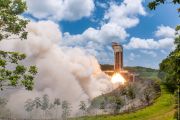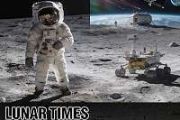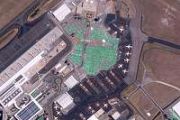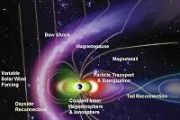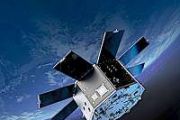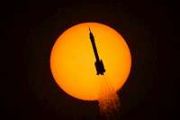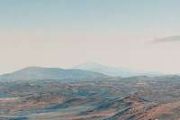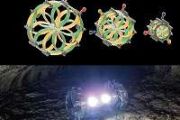
Copernical Team
Chang'e-6 samples pinpoint moon's oldest crater to 4.25 billion years ago
 Chinese scientists have precisely dated the moon's oldest and largest impact feature, the South Pole-Aitken (SPA) basin, to 4.25 billion years ago using lunar samples returned by the Chang'e-6 mission. This result offers critical insights into the moon's formative history and the early development of the solar system.
A research team led by Chen Yi from the Institute of Geology and Geophys
Chinese scientists have precisely dated the moon's oldest and largest impact feature, the South Pole-Aitken (SPA) basin, to 4.25 billion years ago using lunar samples returned by the Chang'e-6 mission. This result offers critical insights into the moon's formative history and the early development of the solar system.
A research team led by Chen Yi from the Institute of Geology and Geophys Shocking Spherules!
 Last week the Perseverance Science Team were astonished by a strange rock comprised of hundreds of millimeter-sized spheres... and the team are now working hard to understand their origin.
It has now been two weeks since Perseverance arrived at Broom Point, situated at the lower slopes of the Witch Hazel Hill area, on the Jezero crater rim. Here, a series of light- and dark- toned bands were vi
Last week the Perseverance Science Team were astonished by a strange rock comprised of hundreds of millimeter-sized spheres... and the team are now working hard to understand their origin.
It has now been two weeks since Perseverance arrived at Broom Point, situated at the lower slopes of the Witch Hazel Hill area, on the Jezero crater rim. Here, a series of light- and dark- toned bands were vi Webb unmasks true nature of the Cosmic Tornado

The NASA/ESA/CSA James Webb Space Telescope has captured a beautiful juxtaposition of the nearby protostellar outflow known as Herbig-Haro 49/50 with a perfectly positioned, more distant spiral galaxy. Due to the close proximity of this Herbig-Haro object to Earth, this new composite infrared image of the outflow from a young star allows researchers to examine details on small spatial scales like never before. With Webb, we can better understand how the jet activity associated with the formation of young stars can affect the environment surrounding them.
Spire debuts AI weather forecasting models built with NVIDIA Omniverse Earth2 tech
 Spire Global, Inc. (NYSE: SPIR) has introduced two state-of-the-art artificial intelligence weather models, AI-WX and AI-S2S, which utilize the NVIDIA Omniverse Blueprint for Earth-2 platform. These advanced systems are powered by Spire's exclusive satellite-derived data and offer medium-range and sub-seasonal forecasts designed to support sectors like energy, utilities, and commodities with hig
Spire Global, Inc. (NYSE: SPIR) has introduced two state-of-the-art artificial intelligence weather models, AI-WX and AI-S2S, which utilize the NVIDIA Omniverse Blueprint for Earth-2 platform. These advanced systems are powered by Spire's exclusive satellite-derived data and offer medium-range and sub-seasonal forecasts designed to support sectors like energy, utilities, and commodities with hig Pixxel satellites deliver groundbreaking hyperspectral imaging milestone
 Pixxel, a leader in hyperspectral imaging technology, has announced a major advancement in Earth observation as its trio of Firefly satellites has captured and transmitted their inaugural 'First Light' imagery. These images set a new benchmark, marking the highest-resolution hyperspectral images ever acquired from space.
Following a flawless commissioning process, all three satellites are
Pixxel, a leader in hyperspectral imaging technology, has announced a major advancement in Earth observation as its trio of Firefly satellites has captured and transmitted their inaugural 'First Light' imagery. These images set a new benchmark, marking the highest-resolution hyperspectral images ever acquired from space.
Following a flawless commissioning process, all three satellites are Advancing satellite methods for mapping coastal seabeds
 Researchers from Flinders University are pioneering cost-effective techniques for collecting essential coastal elevation data, known as bathymetry, by leveraging satellite technology to monitor environmental shifts along South Australia's coastline.
"High-precision traditional technologies such as topographic profiling, boat-based echo sounders and sonar are currently the best available me
Researchers from Flinders University are pioneering cost-effective techniques for collecting essential coastal elevation data, known as bathymetry, by leveraging satellite technology to monitor environmental shifts along South Australia's coastline.
"High-precision traditional technologies such as topographic profiling, boat-based echo sounders and sonar are currently the best available me South Africa China achieve milestone with 12900 km quantum satellite connection
 Scientists from South Africa and China have achieved a historic milestone in quantum communication by creating the world's longest ultra-secure quantum satellite link, spanning an unprecedented 12,900 km. This link, established using the Chinese quantum microsatellite Jinan-1 in low Earth orbit, is also the first of its kind ever implemented in the Southern Hemisphere.
The collaboration be
Scientists from South Africa and China have achieved a historic milestone in quantum communication by creating the world's longest ultra-secure quantum satellite link, spanning an unprecedented 12,900 km. This link, established using the Chinese quantum microsatellite Jinan-1 in low Earth orbit, is also the first of its kind ever implemented in the Southern Hemisphere.
The collaboration be BlackSky advances AI-powered space intelligence with critical design review success
 BlackSky Technology Inc. (NYSE: BKSY) has reached a significant milestone by completing a critical design review (CDR) for a major international defense partner. This accomplishment confirms that BlackSky's upcoming next-generation architecture, anchored by its Gen-3 satellite constellation, will provide rapid, secure, AI-driven intelligence in near real time.
"Completing the CDR is a monu
BlackSky Technology Inc. (NYSE: BKSY) has reached a significant milestone by completing a critical design review (CDR) for a major international defense partner. This accomplishment confirms that BlackSky's upcoming next-generation architecture, anchored by its Gen-3 satellite constellation, will provide rapid, secure, AI-driven intelligence in near real time.
"Completing the CDR is a monu T2S Solutions acquires Blue Marble to bolster space technology portfolio
 T2S Solutions ("T2S"), a founder-led enterprise focused on delivering advanced technologies for U.S. defense, intelligence, and national security, has announced the acquisition of Blue Marble Communications ("Blue Marble"), a specialized developer of space-grade communication and computing solutions.
As global demand intensifies for robust, high-speed technologies in satellite and spacefli
T2S Solutions ("T2S"), a founder-led enterprise focused on delivering advanced technologies for U.S. defense, intelligence, and national security, has announced the acquisition of Blue Marble Communications ("Blue Marble"), a specialized developer of space-grade communication and computing solutions.
As global demand intensifies for robust, high-speed technologies in satellite and spacefli Space Forge secures UK approval to launch first orbital manufacturing satellite
 Space Forge has achieved a historic milestone in the UK space industry by securing a launch licence from the UK Civil Aviation Authority (CAA) for its ForgeStar-1 satellite, the nation's first in-orbit advanced manufacturing platform. Scheduled for deployment later in 2025, ForgeStar-1 will mark Wales' inaugural ISAM (In-Space Advanced Manufacturing) mission and reinforce Space Forge's leadershi
Space Forge has achieved a historic milestone in the UK space industry by securing a launch licence from the UK Civil Aviation Authority (CAA) for its ForgeStar-1 satellite, the nation's first in-orbit advanced manufacturing platform. Scheduled for deployment later in 2025, ForgeStar-1 will mark Wales' inaugural ISAM (In-Space Advanced Manufacturing) mission and reinforce Space Forge's leadershi 







